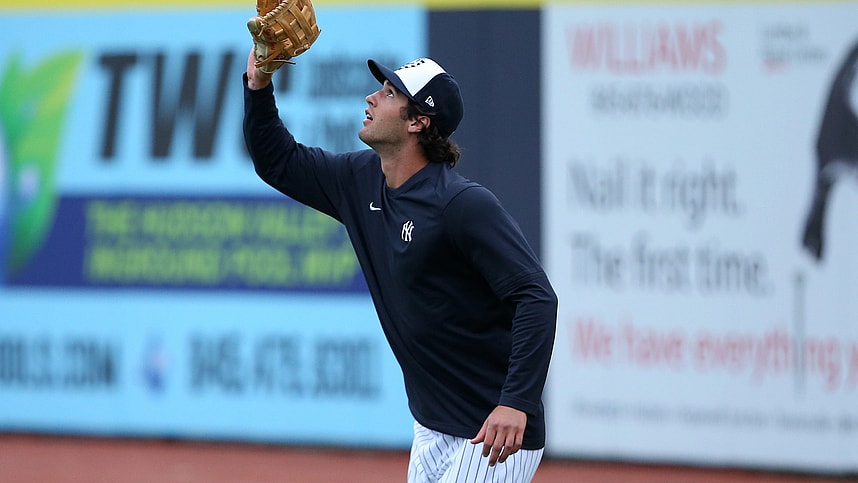
When the Yankees drafted Spencer Jones with their first-round pick in 2022, the team knew they were getting a player with plenty of work to do. At 6’6, the left-handed slugger was known for monstrous power and freakish mobility at his size, and it was easy for scouts and fans alike to make the comparison to current Yankee Aaron Judge. While the two aren’t carbon copies of each other, the upside for Jones is undeniable, making him a consensus top-100 prospect in the sport. This past season was his first full year with the organization, and while it wasn’t an overwhelming success, there were plenty of positives from 2023.
This offseason could be massive for Jones, as he enters his age-23 season with a full year of experience and a chance to crack the Yankees’ big league roster at some point this summer with a breakout season.
Spencer Jones is a Much Safer Bet Than Given Credit For
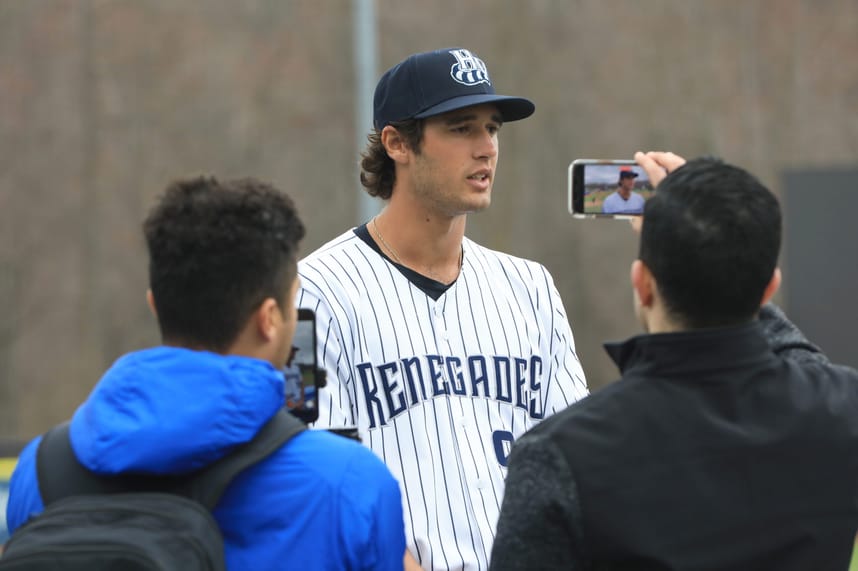
One of the biggest criticisms of Spencer Jones as a prospect is his perceived volatility because of the bat, and while lower contact rates do present questions about how well his bat will translate at higher levels, value goes beyond offense. A skill that Jones doesn’t get enough credit for is his amazing glove in centerfield, something that almost guarantees that the Vanderbilt product can provide MLB value in some capacity. Defensive value is the most underrated component of player evaluation, as we can’t see the impact of defense outside of the highlight catches that show up on social media.
Teams often have to sacrifice offense for defense in centerfield, especially compared to positions like the corner outfield or first base. In 2023, the average wRC+ of a centerfielder was 98, and with +6.0 Defensive Runs Prevented on Baseball Prospectus at the position, he projects to become one of the better defensive outfielders in the game. Some of the most valuable outfielders in baseball play centerfield, with players like Kevin Kiermaier, Harrison Bader, and Daulton Varsho all providing over 2 WAR when they play roughly over 100 games, even if they’re not hard-hitters.
Spencer Jones likely isn’t the defender that either of those three outfielders is, but he likely has a bat that exceeds their talent level. A 113 wRC+ and 16 HRs across 117 games in High-A and Double-A doesn’t blow you away, but as the offense rounds into form, the glove has remained extremely valuable, and he’ll likely be a big-league contributor based on the glove alone. His baserunning has also boosted his value dramatically, stealing 43 bases at a 78% success rate, which would certainly help Jones’ odds of being a fourth outfielder at the very least.
Providing value outside of your bat is important for reaching higher ceilings as well, as most of the top players in the sport can’t get away with a ridiculous bat and no baserunning or defensive value. Some of the few examples include Juan Soto and Yordan Alvarez, who are two of the best left-handed hitters we have ever seen. It would be unrealistic to expect any prospect, even a first-round pick, to be a career 150 wRC+ hitter through in their mid-20s, so as much as defense and baserunning allow you to stick in the Majors with a poor bat, they also allow you to put up 4-5 WAR seasons.
Defense and baserunning are somewhat invisible to the average viewer, and the advent of defensive metrics has certainly challenged the way we view baseball, but they’ve helped us see what was previously impossible to measure. We know that players can help their team win games (or hurt them), and we know that Spencer Jones is an electric defender at a position that demands not just strong route-running but also excellent mobility and range. He also has a cannon for an arm, which, alongside Aaron Judge in the outfield, could help the Yankees rank near the top of the league in outfield assists.
Here’s the thing: No matter how much I prove defense and baserunning matter, we all know that the bat for Jones is what most people care about, and while last year was a struggle at times, there’s still plenty to gaud over in his profile.
- The Yankees should not be deterred by Kyle Tucker’s poor market
- The Yankees might have found their next Luke Weaver in $2 million signing
- Yankees predicted to land Bo Bichette but the reason is ludicrous
Will Spencer Jones Adapt To the Upper Levels of MiLB?
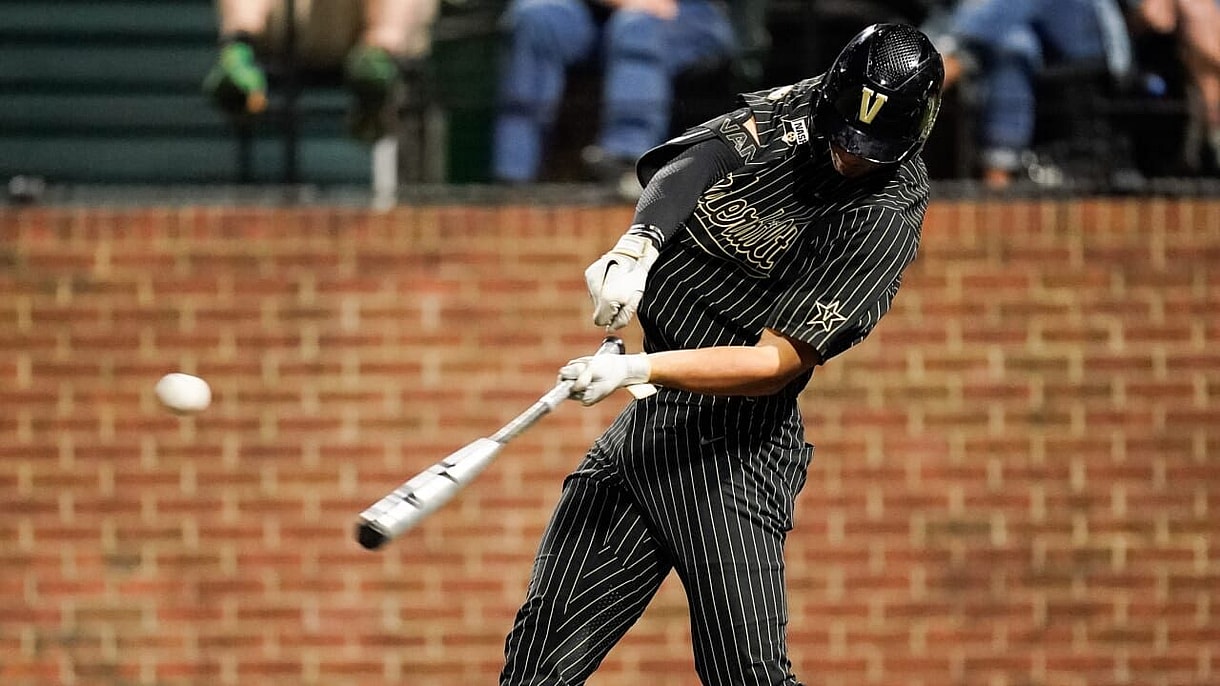
Everyone knows that Spencer Jones can launch the baseball, creating ridiculously high exit velocities and sending baseballs into orbit, but he didn’t even cross the 20-HR threshold in his first season. He did add four triples and 29 doubles, but Jones posted a .444 SLG%, which is underwhelming for what we would expect from a hitter with some of the best raw power in the professional scene. Groundballs were an issue for Jones, who struggled to consistently elevate the baseball or pull it, causing him to not only hit a few flyballs but also fail to get the most out of the few he hit.
Lifting the ball in the air in 2024 could solve a lot of the problems he had last season, but the issue stems from how loftier swings create more swing-and-miss. Jones already struck out 28.9% of the time this season, and trying to add more loft without adding more whiffs will prove to be challenging for the organization. Swing decisions can also be an issue for Jones, who tends to chase more than the average hitter, but the Yankees are a strong organization at developing swing decisions.
This past season, they ranked near the top in swing decision metrics across all of their MiLB affiliates, and despite what people on social media will say, they’re an excellent organization at the Minor League level. They’ve consistently found themselves at or near the top in swing decision metrics, and their ability to help younger hitters unlock traits they couldn’t in previous seasons is remarkable. Caleb Durbin, who was teammates with Jones at High-A and Double-A this season, talked about how the Yankees helped him develop quality of contact skills he sorely lacked:
“I don’t have a ton of swing and miss in my game, so I don’t have to worry about actually hitting the ball. So when I simplify it to just trying to pick my good pitches, see the ball in the zone, and then not cheating myself with my swing and really putting a good, full intent swing on it, when I kind of simplify it to that, it kind of just clicked for me at some point this season.”
– Caleb Durbin
As the Yankees continue to develop young talent and try to bolster their roster, the team needs to get star power from their farm system, something they’ve lacked in recent years. Understandably, fans are upset with the team’s player development because they haven’t had that stand-out rookie since Gleyber Torres and Miguel Andujar came up in 2018, but that doesn’t mean the next crop of prospects will flop either. Many of them have under 100 games played in the Majors except Anthony Volpe, who, at the very least is a league-average player.
Spencer Jones has just one season of MiLB experience, and it’s come with some aggressive promotions, starting in High-A to open the season and making it up to Somerset with the Double-A affiliate. While that doesn’t guarantee long-term success, he held his own after making one of the biggest jumps in MiLB, posting a 104 wRC+ and hitting three home runs in 17 games. That work seems to already have begun, as Aaron Judge’s hitting coach, Richard Schneck, hinted that Jones was the Yankees’ MiLB hitter spending time at his facility.
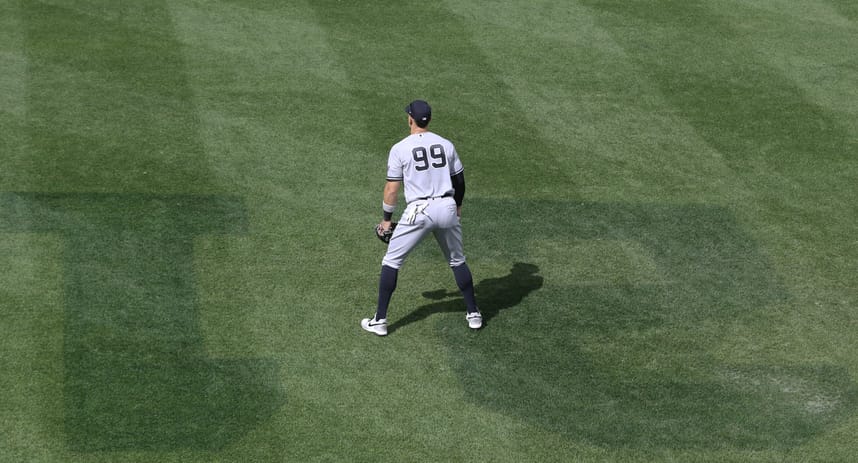
Using the comparison of Aaron Judge here does feel a bit lazy for one big reason: He is the 99th Percentile outcome for a player like Spencer Jones. 41.8 fWAR through 835 games with a 165 wRC+ is flat-out remarkable, and that’s despite battling injuries that have been out of his control at times. That being said, Judge also had launch angle issues that severely limited his game power as he came up through the system, and perhaps Schneck’s familiarity with Judge’s profile could aid him in improving Jones’ issues with elevation.
Before his promotion in 2016, Aaron Judge had a .182 ISO and .456 SLG% in the Minor Leagues, and while fewer hitters sold out for power a decade ago, he was averaging under 24 HRs per 600 plate appearances over that 321-game sample size. A lot of the game power we’ve seen from Judge in his Major League career has come about through his development as a hitter with the Yankees, as one could argue that his 2017 self differs from what we’ve seen over the last two seasons.
The coach who oversaw his MiLB development was James Rowson, who was in the organization as their MiLB Hitting Coordinator from 2013-2016, and the two share a close bond as well. If Spencer Jones is going to crack the Majors in late 2024 or early 2025, having somebody like Rowson, who had a hand in Judge’s development, could prove valuable for the towering outfielder. That being said, where does Jones fit, and could we see him in 2024?
Where Spencer Jones Fits in the Yankees’ Outfield Alignment
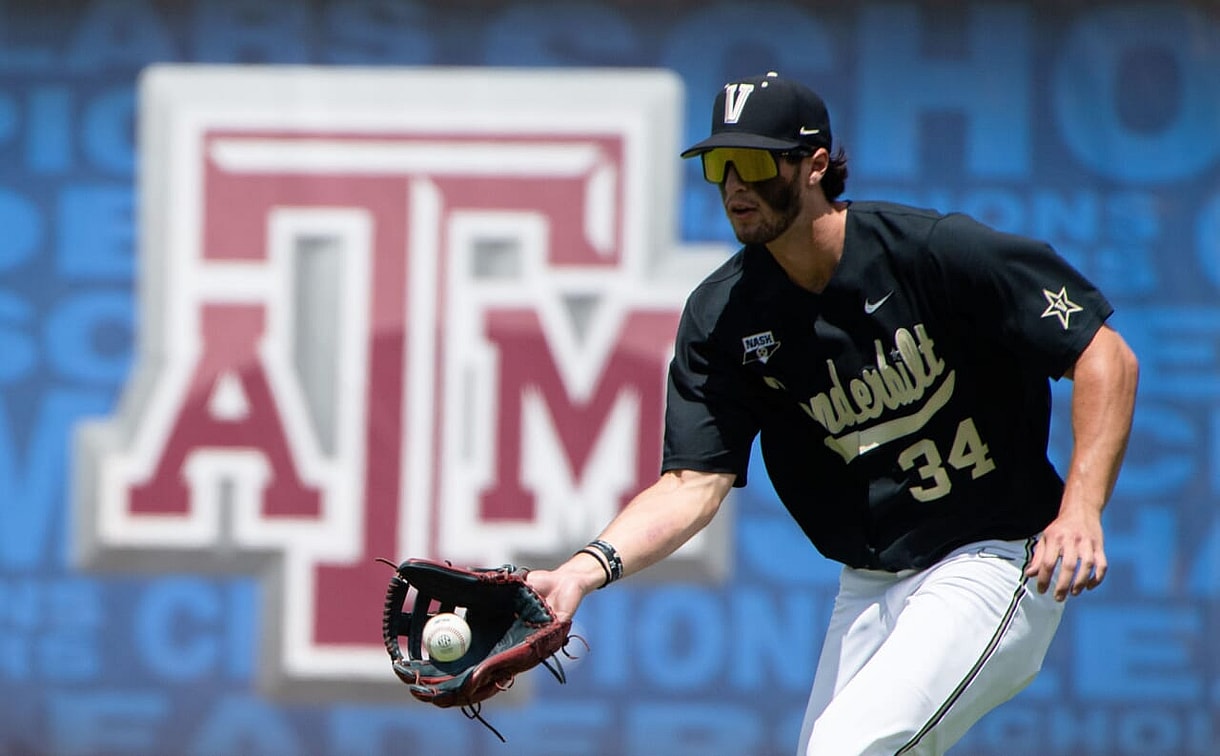
As mentioned earlier, Spencer Jones is an excellent defensive centerfielder, and while in college, he played right field. I believe he’ll stick in center. It’s definitely unusual to have a player as tall as Jones out in center, but the Yankees have shown that they’re willing to play taller defenders out there as long as the defensive fit is there, as evidenced by Aaron Judge. Going into 2024, the Yankees have Aaron Judge, Juan Soto, Alex Verdugo, Trent Grisham, and Giancarlo Stanton as options in the outfield.
Oswaldo Cabrera can play some corner outfield as well, with Everson Pereira looking to claim a corner outfield spot in the near future and Estevan Florial looking for similar opportunities. Jasson Dominguez is also set to return midway through the 2024 season, and while that creates an apparent roster jam, the Yankees’ history with injuries and some of their older players would suggest that this is far from a sure bet. Alex Verdugo is coming off of a season with a 98 wRC+ and is a rental, it wouldn’t be the most surprising move in the world if the team pivoted off of him if he struggles.
The same could be said about Giancarlo Stanton, who is entering dangerous territory following an 89 wRC+ last season, and if the Yankees want to win ballgames, they cannot let production like that clog up the middle of their lineup and the DH spot. Jasson Dominguez isn’t a sure thing defensively in centerfield, and the Yankees have to wait for him to get healthy before they can reliably evaluate what he’ll be in 2024 offensively. Trent Grisham is more of a fourth outfielder as well, and players like Pereira, Florial, and Cabrera are unproven at best.
If Spencer Jones can get off to a hot start in Double-A, the Yankees could get him to Triple-A quickly, as it only took 35 games for the Yankees to promote Everson Pereira last season after he posted a 145 wRC+. With a strong enough stretch at Triple-A, the All-Star Break suddenly becomes a point where the Yankees could begin having those internal conversations based on the team’s needs. This wouldn’t be the median outcome, but it’s certainly feasible given the talent that Jones possesses.
What Spencer Jones could provide is a centerfielder who hits 20+ HRs in a season while adding Gold Glove defense and stellar baserunning, and while the OBP won’t always be the best, everything else in his profile makes up for it. This could be a 3 WAR player even with average offense at the plate, but if he does click offensively, this could be a potential MVP candidate who anchors the outfield with Judge and Soto for years to come.
More about: New York Yankees